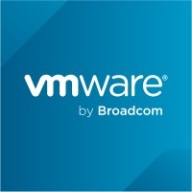


VMware Aria Automation and AWS CloudFormation are leading solutions in the infrastructure automation category. VMware Aria Automation appears to have an edge in managing complex environments and hybrid clouds, whereas CloudFormation performs exceptionally well within AWS environments but lacks broader integration capabilities.
Features: VMware Aria Automation provides a rich toolset for managing complex environments with NSX integration and vRealize Orchestrator. It supports user self-provisioning and custom blueprints, excelling in hybrid and multi-cloud environments. AWS CloudFormation emphasizes its Infrastructure as Code approach, offering a template-based system that integrates smoothly with AWS services, ideal for automating resource management.
Room for Improvement: VMware Aria Automation users highlight integration complexity and documentation issues, suggesting better API refinement and simplified configurations. AWS CloudFormation could improve in error handling, template flexibility, and interoperability, especially in non-AWS contexts.
Ease of Deployment and Customer Service: VMware Aria Automation generally requires on-premises deployment with strong technical support, though complex cases may see delays. AWS CloudFormation, used mainly in public clouds, benefits from extensive community support and self-service resources, though direct assistance might lag behind VMware's support.
Pricing and ROI: VMware Aria Automation has higher licensing costs justified by its extensive features and enterprise focus, offering long-term benefits despite potential financial strain. AWS CloudFormation provides a cost-effective approach with no intrinsic use costs, aligning with pay-as-you-go models, though its simplicity may limit complex deployments. Both platforms offer substantial ROI through operational time and cost savings.
Everything we've gained from it makes my job easier day after day, and I see value in it as an engineer.
Microsoft Intune not only saves costs by reducing the number of personnel needed but also offers a comprehensive solution for managing laptops, applications, security, individual access, and enrollment.
Importantly, when someone leaves the company, it helps protect document access on their devices.
When a support ticket is submitted, it directly reaches someone with Intune support expertise.
When I contacted Microsoft, they had the same expertise, if not more, which is phenomenal because I felt heard and my problem was solved.
Sometimes, the support provided is excellent, and the representative is knowledgeable, while other times, the service needs improvement.
While this might be acceptable for some, it can be lengthy depending on the urgency of the issue.
Free support for AWS CloudFormation is not provided, and while some support is understandable due to its complexity, assistance for service-related issues should be accessible without a cost.
We never had major issues to report or request support.
The scalability of Microsoft Intune is ten out of ten.
Ideally, we want to automatically segregate devices based on user properties like primary use, but currently, dynamic groups seem limited to device properties.
It supports organizations with 200 endpoints and those with more than 15,000 endpoints.
Splitting CloudFormation into multiple formations results in changes to resources like API gateway URLs and Cognito pools, which causes issues, especially when trying to maintain consistency across resources.
Adjusting capacity and functionality is a fundamental use.
We have not experienced downtime, bugs, or glitches.
It appears Microsoft Intune undergoes changes without informing customers.
Microsoft Intune has been very stable.
It has been reliable and efficient in all my deployments.
Data loss can occur when splitting or scaling applications due to changes in resources.
It's a service that has been around for years, and it handles large complex deployments and updates with very good consistency.
Features like unlocking devices sometimes fail, and the support offered for other operating systems is insufficient.
There are communication issues, so you might start working with a feature without knowing if it will be deprecated six months from now.
Many third-party companies offer single-pane-of-glass reporting that shows you what your update environment looks like, how your patch is doing, application status, etc., but Intune's reporting is not intuitive.
It presents challenges for users unfamiliar with coding, posing as a barrier to fully utilizing CloudFormation.
Creating microservices and connecting multiple APIs into a single API gateway can be challenging; documentation should address specific needs.
Managing the correct order of resource creation and some updates can be tricky, especially with interdependent resources.
It operates for both of my products, however, as a product, it is complicated to integrate and automate with other products.
Introductory professional services, like a fast-track service, were included with our E5 membership, and there have been no additional costs.
The Intune suite and add-ons, such as batch management and remote help, are costly.
It costs approximately forty euros per user per month.
AWS CloudFormation is free.
Intune excels in configuration and compliance management for Windows 10, ensuring devices receive timely updates and adhere to organizational standards.
Dynamic groups allow us to set conditions for automatic membership, eliminating the need for user intervention or manual review and ensuring a seamless workflow.
Windows Autopatch is the most valuable because it removes the burden of patch management.
I can see the entire infrastructure and its connections through code.
Managing, maintaining, and deploying become easier as it allows the creation of the same resources on multiple accounts, making it efficient for infrastructure management.
It helps us automate the workflow of creating many VMs and the TensorFlow key method.
We have strong regulations for maintaining compliance and mitigating risks with this product.
| Product | Market Share (%) |
|---|---|
| Microsoft Intune | 8.7% |
| VMware Aria Automation | 5.7% |
| AWS CloudFormation | 2.8% |
| Other | 82.8% |


| Company Size | Count |
|---|---|
| Small Business | 117 |
| Midsize Enterprise | 46 |
| Large Enterprise | 152 |
| Company Size | Count |
|---|---|
| Small Business | 15 |
| Midsize Enterprise | 8 |
| Large Enterprise | 17 |
| Company Size | Count |
|---|---|
| Small Business | 32 |
| Midsize Enterprise | 24 |
| Large Enterprise | 130 |
Microsoft Intune provides centralized management of mobile devices and applications, ensuring security, compliance, and productivity through integration with Microsoft services like Microsoft 365 and Azure Active Directory.
Organizations use Intune for managing mobile devices and applications, enhancing security and compliance across platforms. With features like single sign-on, conditional access, and zero-touch deployment via Autopilot, it facilitates efficient operations. Intune's scalability, easy enrollment, and capabilities such as remote wipe support diverse device management, offering robust data protection and efficient operation. Despite its features, improvement areas include reporting, compatibility with non-Microsoft devices, and better support for macOS and Linux devices.
What are the key features of Microsoft Intune?
What benefits should users look for in reviews?
In industries such as finance, healthcare, and education, Microsoft Intune is implemented to ensure secure and compliant device management. Companies leverage its capabilities to deploy security policies and manage both corporate-owned and BYOD environments, facilitating a unified approach to data protection and compliance.
AWS CloudFormation provides a common language for you to model and provision AWS and third party application resources in your cloud environment. AWS CloudFormation allows you to use programming languages or a simple text file to model and provision, in an automated and secure manner, all the resources needed for your applications across all regions and accounts. This gives you a single source of truth for your AWS and third party resources.
VMware Aria Automation is a cloud management tool that allows companies to simplify their cloud experience through a modern automation platform. The solution is designed to deliver self-service clouds, multi-cloud automation with governance, and DevOps-based security and infrastructure management. It helps organizations improve IT agility, efficiency, and productivity through its various features.
VMware Aria Automation has multiple use cases that include the following:
VMware Aria Automation Features
VMware Aria Automation has various features that allow users to easily perform operations. Some of the solution's capacities include:
VMware Aria Automation Benefits
VMware Aria Automation offers its users various benefits. Some of the biggest advantages that the solution brings to companies that utilize it include:
Reviews from Real Users
Awais J., CTO/CEO at a tech services company, likes VMware Aria Automation because it saves a lot of time, provides more visibility, and has extensive automation capabilities.
An IT consultant at a government rates VMware Aria Automation highly because the product gives you flexibility to analyze and consume resources.
We monitor all Configuration Management reviews to prevent fraudulent reviews and keep review quality high. We do not post reviews by company employees or direct competitors. We validate each review for authenticity via cross-reference with LinkedIn, and personal follow-up with the reviewer when necessary.